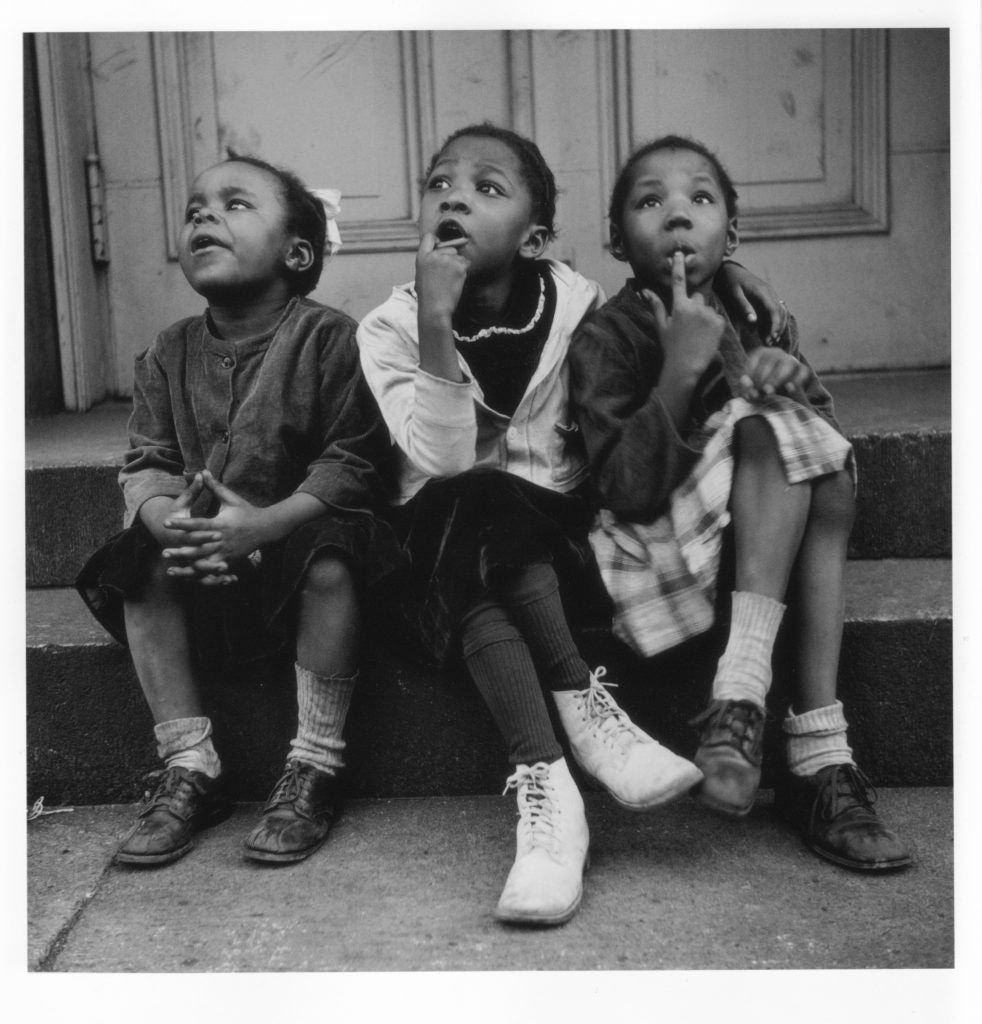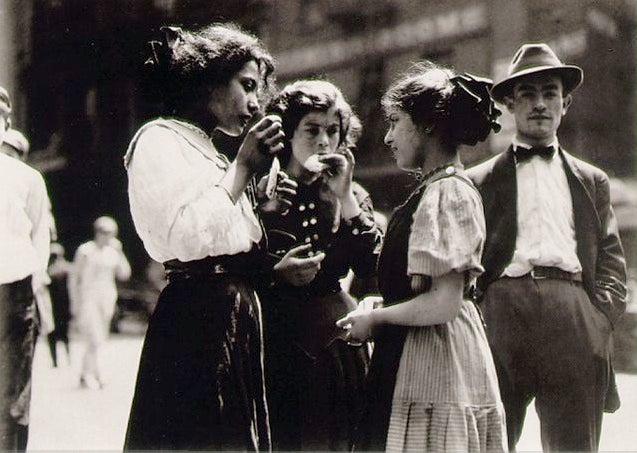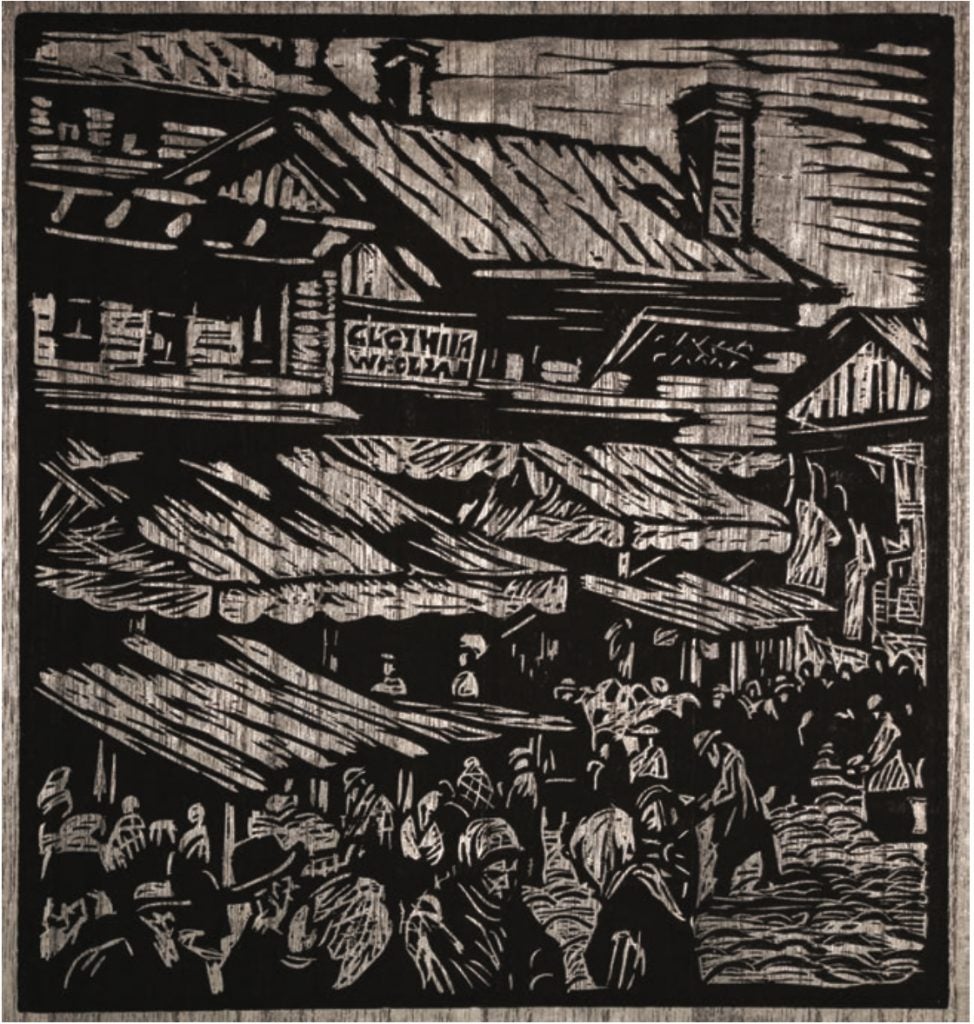In 2013 I introduced an experimental course. The Liberating Lens: Jewish Photographers Picture the Modern World related directly to my ongoing research. This project received funding from the Third Century Initiative to support the introduction of transmedia storytelling—telling a single story across multiple platforms to create synchronized content—to students. The course subsequently entered the catalog as Modern Jewish Photographers, https://courses.lsa.umich.edu/liberatinglens/.

Eventually the course entered the regular curriculum as Modern Jewish Photographers, with a focus on European and American documentary photographers of the 20th century. The final transmedia project has endured. Students discover the challenges and rewards of taking their own photographs and presenting them on a website in dialogue with their own choice of professional Jewish photographer.
In 2017 Jennifer Friess arrived as photography curator at UMMA. She became a wonderful partner, introducing opportunities for students to research and present an exhibit of photographs held by the museum. W20 Deborah Dash Moore – FTVM 379 / HISTORY 379 / JUDAIC 379 : Jewish Photographers Exhibition Project
When I first came to the University of Michigan, I introduced a course in the History of American Jews. That course traces the historical development of American Jews from their origins as a small outpost in the colonial era to their evolution as the largest Jewish community in the world. It looks at how Jews became American and how they redefined what it meant to be Jewish. I employ a variety of sources—including first-person accounts and documents, narrative and analytical histories, as well as music, film and photography—to engage multiple dimensions of the history of Jews as an American minority group, a dissenting non-Christian religious group, an immigrant and ethnic group, and an influential cultural group.

Then I received an opportunity to teach graduate students and advanced undergraduates about the recent history of American Jews in the decades following World War II. These years, stretching into the 21st century, have attracted exciting new scholarship. Students and I share the experience of reading new books, watching films, and listening to music, exploring complex facets of Jewish American life.
Most recently, I introduced a transnational course for advanced undergraduates. From Ghetto to Suburb probes the fascinating and troubling history of the Jewish ghetto, from its creation in Venice through its bifurcated reinvention in the United States. Nazi ghettos were the anterooms to hell. New York and Chicago contained neighborhoods known as Jewish ghettos. Detroit, Los Angeles, and Miami were considered new cities for Jews, places where Jews left their ghettos behind. However, Black neighborhoods in New York, Detroit, and Chicago were also called ghettos.

In this course, we look at these European and American cities to examine how the ghetto got its name and its reputation as a quintessentially Jewish urban space and then how the ghetto lost its Jewish associations as Jews moved to new cities and new neighborhoods. The course aims to illuminate how Jewish urban experiences shaped contemporary understandings of what makes a city.
Other courses taught at the University of Michigan:
Studying Jews (with Andrew Bush)
Introduction to Judaic Studies (graduate course)
Jews in the Modern World
Detroit: Race, Religion and Ethnicity in the 20th century (with Marian Krzyzowski)
Literature of American History (graduate course with Gregory Dowd)
